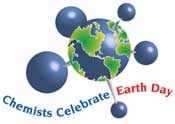Special Topics: Electronic Resources
This is a collection of Electronic Resources (websites, software, etc.) about water. A separate collection of Print Resources is also available.
Key: E = Elementary (K–5), I = Intermediate (6–8), HS = High School (9–12), C = College, G = General Public
Acid Rain
- Acid Rain, from the U.S. Environmental Protection Agency (E, I, HS, C, G)
- Acid rain is a serious environmental problem that affects large parts of the US and Canada. This section of the Web site provides information about acid rain’s causes and effects, how we measure acid rain, and what is being done to solve the problem.
- Acid Rain, from Environment Canada. (E, I, HS, G)
- Contains information about what causes acid rain and what’s being done about it in Canada. The Kids’ Corner section focuses on the pH scale and has experiments on measuring pH for elementary, middle, and high school students.
- Acid Rain, from the Girl Scouts > Plugged In! > Girls Science Network. (E, I, HS)
- Is the rain in your area acidic? How does it compare to rainfall in other parts of the country? Help to answer these questions by gathering and testing rainfall samples. Explore the causes of acidic rain and its effects on the environment.
- Acid Rain Sourcebook, from the U.S. Environmental Protection Agency. (E, I)
- This site is a student’s first source book including experiments and activities, basic acid rain concepts, and things you can do about acid rain.
- In the Laboratory: Acid Rain, from Discovery School.com. (E, I)
- How acidic is the rain where you live? Join the investigation to find out! Then add your local results and see how your community compares to others around the nation. Come back as many times as you want — every time you add your data, you’ll update the national acid rain map. Spread the word to friends in other communities and states!
- Surfing the Net With Kids > Science, from Barbara J. Feldman. (E, I)
- Topical directory that includes a few key web sites and related games on the water cycle and acid rain.
Recreational Reading
- Activity Idea Place, from 123child.com. (P, E)
- This unit on water includes poems, art projects, easy science experiments, games, creative play, books and miscellaneous activities that can be done to help children learn more about water.
- Dehydrated Water, from buydehydratedwater.com. (I, HS, C, G)
- Tongue-in-cheek web site that sells “dehydrated” water. Dehydrated water is compact, lightweight, easy to store, and perfect to take wherever you go. It’s free of toxins, chemicals, lead, minerals, and almost every other dangerous substance you can think of. And best of all, it contains no calories or any fat.
- Dihydrogen Monoxide, from Tom Way. (I, HS, C, G)
- The controversy surrounding dihydrogen monoxide has never been more widely debated, and the goal of this site is to provide an unbiased data clearinghouse and a forum for public discussion.
- Juice Bottle Jingles, from the Lawrence Hall of Science. (G)
- By filling juice bottles with different amounts of water, you can create some catchy
tunes! Here’s how to do it with real bottles at home: take six glass juice bottles or
very tall drinking glasses and fill them with different heights of water to make a six
note scale. (Use your voice or a piano to see if you’re in tune!)
Almost three-fourths of the Earth’s surface is covered in water. All living things depend on water for their survival. Think about the neighborhood where you live or go to school. Is there a body of water nearby, such as an ocean or river? That’s part of the hydrosphere. - Science is Fun — Home Experiments.
- Learn how to bend water.
- WET Culture: Raining Cats and Dogs — Water Proverbs. (G)
Copyright © 2004 American Chemical Society

